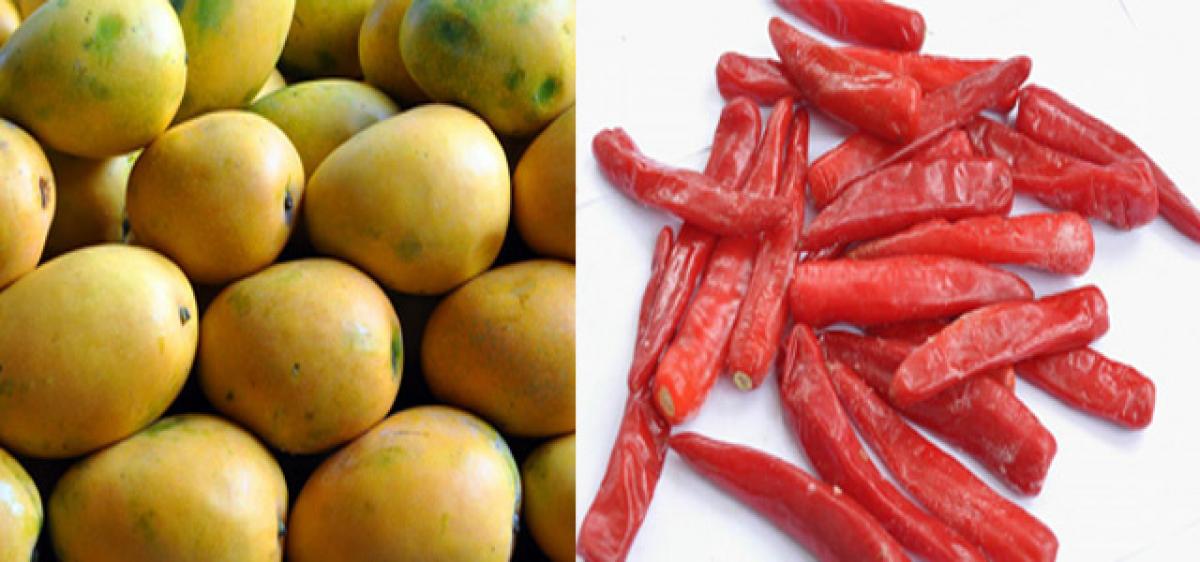Just In

Many varieties of fruits, vegetable and cereals in India have region or state specific origins. For instance the delicious Banganapalli mango is named after the town in Kurnool district where it is grown.
CDFD to develop biodiversity molecular markers
Many varieties of fruits, vegetable and cereals in India have region or state specific origins. For instance the delicious Banganapalli mango is named after the town in Kurnool district where it is grown. Likewise, we have the red hot Guntur chillies and also the dwarf tongue sizzler, the bhut jolokia chilli from Assam. Punjab, Haryana and Madhya Pradesh are major producers of Basmati rice.
Every region and State in the country is home to a treasure trove of indigenous fruits and vegetables, each having a distinct flavour and other intrinsic values. But, the unique characteristics of these fruits, vegetables and cereals are getting lost in the maze of clones grown in regions other their native locations with claims of being original varieties.
To prevent such possibilities and also scientifically authenticate the nativity, Hyderabad-based Centre for DNA Fingerprinting and Diagnostics (CDFD) is working on molecular markers to distinguish the genuine from the fake varieties. Disclosing this to The Hans India, Dr. Subhadeep Chatterjee, Staff Scientist, CDFD explained that the distinct taste and other phenotypic attributes are influenced by both genetic and environmental factors.
For instance, mangoes grown in different regions have different tastes and physical appearances. Bhut Jolokia chillies from Assam grown elsewhere in a different environment cannot be the same as the original. Molecular markers are used in biology and biotechnology to identify a particular sequence of DNA in a pool of unknown DNA.
These markers can enable identification of distinctive features of region or location specific produce. Such scientific validation, when it materializes, will not only ensure positioning of authentic products in the supply chain and establish their identity, but also qualify them for Geographical Indication.
A geographical indication (GI) is a sign that identifies a product as originating from a particular location which gives that product a special quality or reputation or other characteristic. The CDFD has carved a niche in development of molecular markers for various applications, the most significant among them being markers to distinguish basmati and non-basmati varieties of rice.
On this foundation, the CDFD later developed markers for original (traditional) and evolved varieties of Basmati. “The production of evolved varieties became a necessity because of low yielding characteristic of original Basmati, apart from it being confined to certain environments.” Evolved varieties have a higher yield compared to Basmati. Dr. Subhadeep pointed out the evolved varieties have the same quality as the original.
“The only difference between the two is productivity, otherwise they are indistinguishable.” Initially there were only 4 or 5 traditional varieties but over a period of time the numbers have increased to 24 which include traditional and evolved varieties.
Consequently there is rampant adulteration with cheaper rice which appears like basmati. To unravel the difference between the pure or evolved varieties and the impure rice and also the percentage of contamination, the CDFD have modified and developed more markers to identify and isolate the pure from the adulterated varieties.
“We are now analyzing the multiple genes on the genome contributing to the phenotype which is otherwise known as QTL ((quantitative trait locus). Through this analysis, it is possible to zero-in exact phenotypic characteristics that contribute to attributes like aroma and slenderness of the rice.
By Satyapal Menon

© 2024 Hyderabad Media House Limited/The Hans India. All rights reserved. Powered by hocalwire.com







